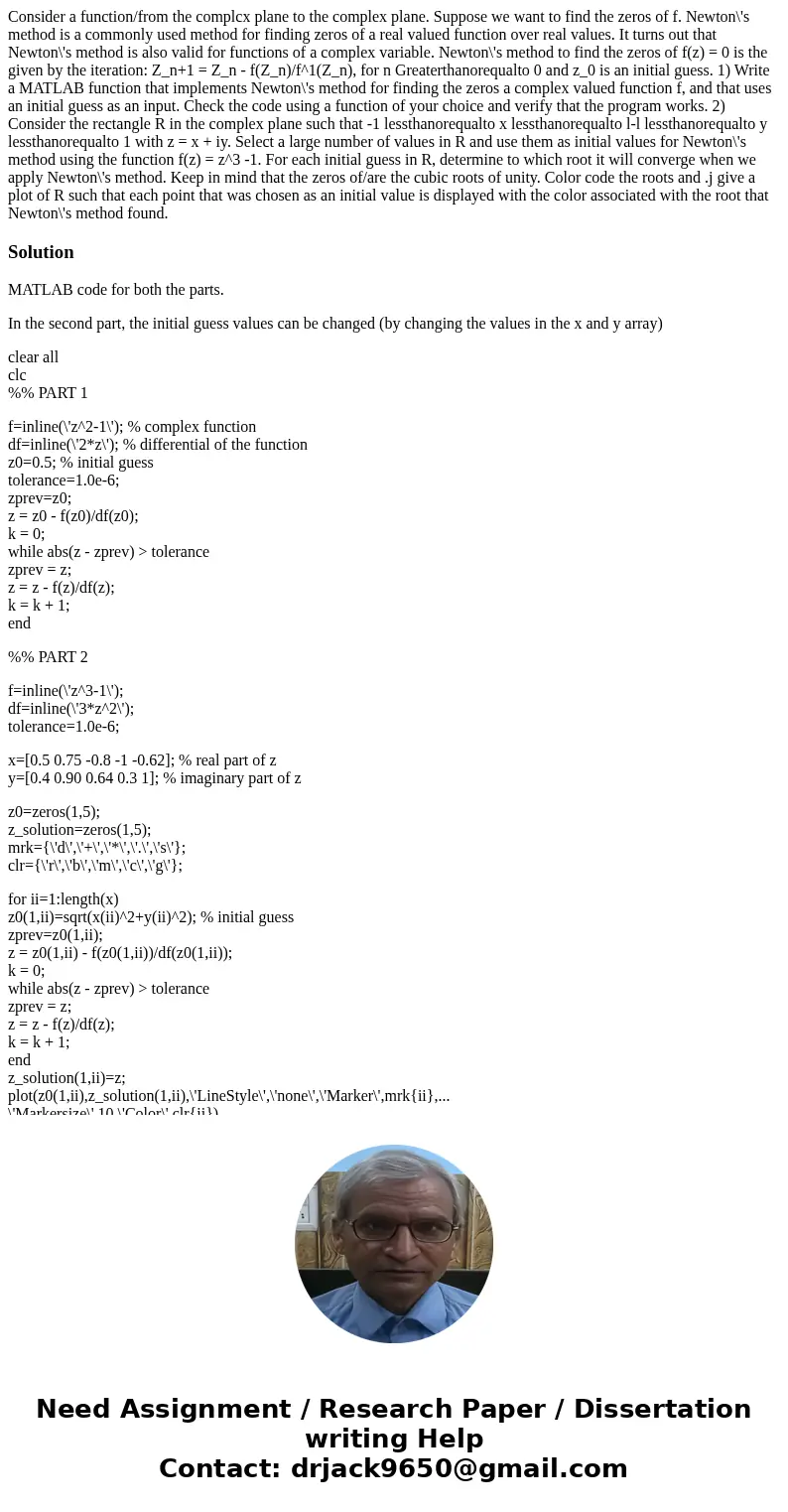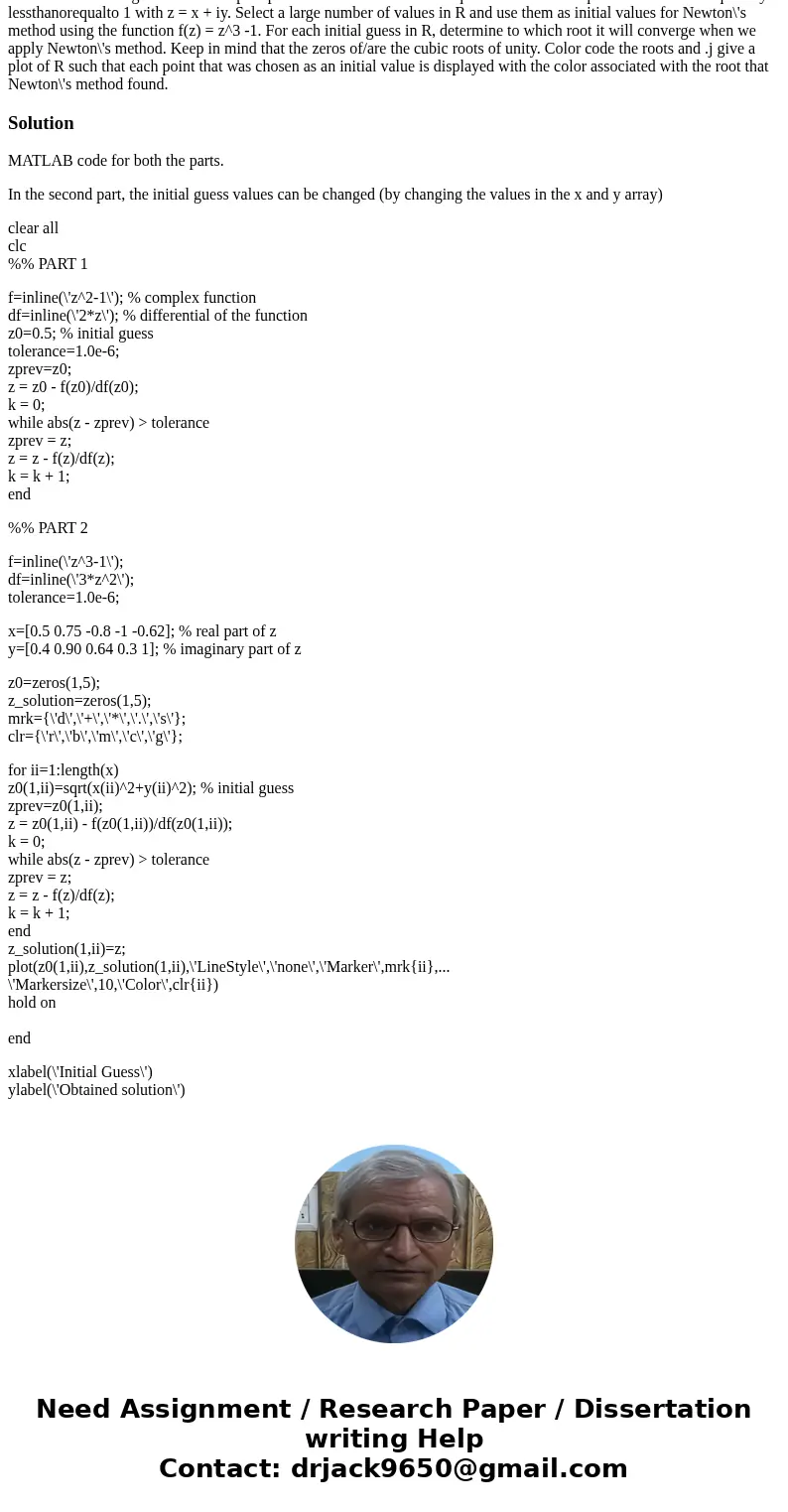Consider a function/from the complcx plane to the complex plane. Suppose we want to find the zeros of f. Newton\'s method is a commonly used method for finding zeros of a real valued function over real values. It turns out that Newton\'s method is also valid for functions of a complex variable. Newton\'s method to find the zeros of f(z) = 0 is the given by the iteration: Z_n+1 = Z_n - f(Z_n)/f^1(Z_n), for n Greaterthanorequalto 0 and z_0 is an initial guess. 1) Write a MATLAB function that implements Newton\'s method for finding the zeros a complex valued function f, and that uses an initial guess as an input. Check the code using a function of your choice and verify that the program works. 2) Consider the rectangle R in the complex plane such that -1 lessthanorequalto x lessthanorequalto l-l lessthanorequalto y lessthanorequalto 1 with z = x + iy. Select a large number of values in R and use them as initial values for Newton\'s method using the function f(z) = z^3 -1. For each initial guess in R, determine to which root it will converge when we apply Newton\'s method. Keep in mind that the zeros of/are the cubic roots of unity. Color code the roots and .j give a plot of R such that each point that was chosen as an initial value is displayed with the color associated with the root that Newton\'s method found.
MATLAB code for both the parts.
In the second part, the initial guess values can be changed (by changing the values in the x and y array)
clear all
clc
%% PART 1
f=inline(\'z^2-1\'); % complex function
df=inline(\'2*z\'); % differential of the function
z0=0.5; % initial guess
tolerance=1.0e-6;
zprev=z0;
z = z0 - f(z0)/df(z0);
k = 0;
while abs(z - zprev) > tolerance
zprev = z;
z = z - f(z)/df(z);
k = k + 1;
end
%% PART 2
f=inline(\'z^3-1\');
df=inline(\'3*z^2\');
tolerance=1.0e-6;
x=[0.5 0.75 -0.8 -1 -0.62]; % real part of z
y=[0.4 0.90 0.64 0.3 1]; % imaginary part of z
z0=zeros(1,5);
z_solution=zeros(1,5);
mrk={\'d\',\'+\',\'*\',\'.\',\'s\'};
clr={\'r\',\'b\',\'m\',\'c\',\'g\'};
for ii=1:length(x)
z0(1,ii)=sqrt(x(ii)^2+y(ii)^2); % initial guess
zprev=z0(1,ii);
z = z0(1,ii) - f(z0(1,ii))/df(z0(1,ii));
k = 0;
while abs(z - zprev) > tolerance
zprev = z;
z = z - f(z)/df(z);
k = k + 1;
end
z_solution(1,ii)=z;
plot(z0(1,ii),z_solution(1,ii),\'LineStyle\',\'none\',\'Marker\',mrk{ii},...
\'Markersize\',10,\'Color\',clr{ii})
hold on
end
xlabel(\'Initial Guess\')
ylabel(\'Obtained solution\')


 Homework Sourse
Homework Sourse